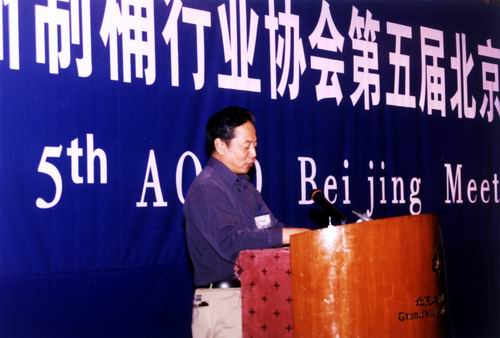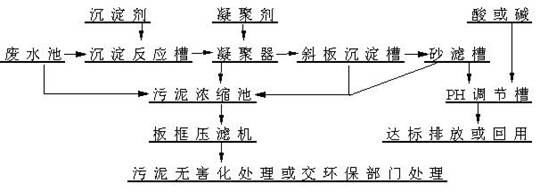Steel drum painting and environmental protection (1)
-- Speech at the 5th Pan-Asian Steel Barrel Industry Conference
Shanghai Xugong Coating Technology Co., Ltd. Xu Guoxing

Coatings are a wide range of fine chemicals, which are involved in daily life, national economy and national defense construction. They are developed very rapidly. The varieties are extended from general-purpose coatings with only decorative and protective functions to various surfaces of the coated objects. Special specialty coatings for performance. At present, the number of coatings has reached nearly one thousand, and the annual output of world coatings has exceeded 20 million tons. The coatings used in our steel drum industry are also evolving rapidly, from the initial use of metal-based coatings to the use of exterior and interior coatings for steel drums with various functions. The amount of paint used per year has also grown to thousands of tons.
With the increasing awareness of environmental protection, countries around the world have successively formulated regulations to limit the emission of organic matter, and promote the production and coating of coatings in the direction of saving resources, saving energy, and pollution-free.
First, the relationship between steel drum coating and environmental protection
For environmental pollution, the coating of paint is much more serious than the production of paint. Imagine that the solid content of our steel drum coatings is mostly below 50% (except for powder coatings), and the solid content of PVF coatings is only about 24%. Most of the rest are organic volatilizations that run to the atmosphere during the curing process of the coating. The lower the solid content of the coating, the more serious the pollution of the atmosphere.
In fact, for ourselves in the steel drum industry, no one is willing to let the paint bought by the money fly to the sky in vain and become a waste of environmental pollution. Reduce the environmental pollution, but also reduce the unit consumption of steel drum coating. Therefore, the relationship between steel drum painting and environmental protection can be said to be the same as profit and harm.
Second, the steel barrel coating environmental pollution
In steel drum painting, pre-treatment and different coatings and different construction methods have different environmental pollution.
1, pre-treatment of environmental pollution
In the pre-treatment process, in order to remove the oil stain and rust on the surface of the steel drum, a clean surface coated with a phosphating film suitable for coating is obtained, and a large amount of surfactant, acid, alkali, salt, various kinds are generated. Auxiliary and heavy metal ion wastewater. For each rinsing process that is only pre-treated, the average amount of wastewater generated per steel drum can be as high as 30 to 50 liters.
2, different coatings cause different pollution to the environment
The environmental pollution of paints mainly manifests as the pollution of organic volatiles to the atmosphere, and the solid content of paints and the organic volatiles contained in them have become the main indicators of our research on environmental pollution.
a, steel drum coating
The outer coatings with the most domestic steel drums are amino baking varnishes, followed by phenolic lacquers or phenolic enamels, alkyd enamels and nitrocellulose lacquers, as well as some barrel mills using powder coatings.
The solid content of the domestically produced amino baking varnish is about 45%, and the solid content of the special baking varnish of X-516 steel drum is about 48%. Their main organic volatiles are toluene, xylene, butanol, etc. -516 baking varnish has a lower benzene content.
The phenolic blend paint has a high solid content, generally above 60%, and its organic volatiles are mainly benzene and solvent gasoline No. 200.
The alkyd enamel has an average solids content of more than 45%, and its main organic volatiles are xylene and solvent gasoline No. 200.
Nitrocellulose lacquer seems to be very thick and has a high viscosity, but its solid content is not high. There are three kinds of nitrocellulose lacquers that can be used on steel drums. The general solid content is between 30 and 40%, and their main organic volatiles. It is acetate, ketone, butanol and benzene. Because they require more diluent than any other paint during use, the environmental pollution of the nitrocellulose paint during construction is the largest compared to other steel drum paints.
The smallest environmental pollution is powder coating, which is 100% solid. The last thing that evaporates into the atmosphere when baking is only a small amount of product when the resin and the auxiliary agent decompose at high temperature.
b, steel barrel coating
At present, the domestic steel drum industry mainly uses three major categories, namely epoxy, PVF and phenolic.
Epoxy coatings are the earliest and most cost-effective traditional coatings used in the domestic and international steel drum industry. The epoxy content of domestically produced epoxy coatings is about 36%, the organic volatiles are mainly xylene, cyclohexanone, alcohols and esters; the solid content of epoxy coatings for X-622 steel drums is about 40%. Its organic volatiles are already free of xylene.
The viscosity of PVF coatings is much larger than other coatings. In fact, its solid content is only about 24%. The organic volatiles are mainly dimethyl phthalate, propylene carbonate and the like.
The phenolic steel drum inner coating is currently only X-362 type, its viscosity looks very low, only about 20 seconds (coating - 4 cups 25 ° C), but its solid content is also about 40%, the main organic volatiles It is a ketone alcohol.
In addition, the only patented product in the steel drum special coatings in recent years, the two-component normal temperature and quick-drying X-891 coating (divided into electrogalvanized steel drum anti-oxidation and lightening) The amount of transparent outer coating, steel drum surface anti-corrosion anti-corrosion anti-off paint transparent brightening coating, three anti-growth transparent mirror coating in open steel drum, anti-corrosion coating in various steel drums, etc.) also increased rapidly. The solid content of the coating is about 40%, and the organic volatiles are mainly acetates.
3, different impacts of different construction methods on the environment
As mentioned above, for environmental pollution, especially for atmospheric pollution, coating construction is far more serious than paint production. During the construction process, the organic solvent, which accounts for more than 50% of the total weight of the solvent-based coating, is completely volatilized. The amount of solvent used in the production of paints in the atmosphere is less than 0.25% of the amount of solvent used in the production of paints. Although paint production also produces waste, the total amount of waste does not exceed 3% of the paint production.
In the paint construction process, according to different construction methods, but the loss of paint can account for 20 to 80% of the amount of paint used. In areas where industrial concentration is concentrated, organic volatiles in the paint construction process account for more than 27% of the total hydrocarbon emissions in this area.
At present, the main coating methods in China's steel drum industry include manual brushing, air spraying, high pressure airless spraying, electrostatic spraying, and rotating cup coating. Among them, the painting method of scattering paint mist at least during construction or even without flying paint mist is considered to be electrostatic spraying and manual brushing. The biggest spray mist during construction is air spraying. After air spraying, the amount of coating that finally forms a coating on the surface of the steel drum is only less than 30% of the total amount of the initial construction coating, while the organic volatiles that run into the atmosphere alone account for more than 50%, and the remaining 20%. The left and right coatings are not brought into the atmosphere by organic volatiles in the form of paint mist, or they are polluted in the form of waste slag.
Third, the treatment of coating pollution
The pollutants in the barrel coating process mainly exist in three forms, namely waste water, waste gas and waste residue.
1, wastewater treatment
The source of wastewater in the steel drum industry mainly comes from two aspects, namely the wastewater generated during the pre-treatment of the steel drum and the wastewater generated by the curtain of the spray booth. The wastewater generated in the pretreatment process is the main source of steel drum coating wastewater. At present, the main wastewater treatment methods are physical treatment, chemical treatment and biological treatment.
The physical treatment method can be divided into a sedimentation method (separation of sediment by gravity or centrifugal force), a filtration method (separating suspended solids from waste water by filter cloth or filter paper), a combustion method (concentrating and drying waste water after combustion), and adsorption method. (Adsorption by porous active material), air floatation method (using bubbles and adhesion of particles in waste water to cause floating separation), membrane separation method (separation of wastewater by ultrafiltration and reverse osmosis).
Chemical methods can be divided into neutralization method (neutral treatment with acid and alkali), redox method (oxidation and reduction of ions with sodium sulfite, air, chloride, etc.), coagulation method (separation of suspended solids by coagulant) Ion exchange method (ion exchange using ion exchange resin to treat wastewater containing heavy metal ions).
The biological treatment method includes a biofilter method (using a biofilm on the surface of a biofilter to adsorb an oxidized organic substance) and an activated sludge method (using an activated sludge containing a microorganism to oxidize and decompose an organic substance).

Typical and practical wastewater treatment processes are as follows:
The pre-treatment of most barrel mills in China is mainly de-oiling and phosphating, while the de-oiling method is mainly used for chemical de-oiling; the phosphating solution is mainly used for ferro-manganese phosphating. And most of the barrels used in the degreasing and phosphating solutions are supplemental (there is no replacement of the new liquid during use, but only added), so the pretreatment wastewater of the steel drum coating mainly contains oil and contains surface. Active agent, sodium hydroxide, trisodium phosphate, sodium carbonate, sodium silicate, etc., as well as alkaline effluent drainage wastewater of various additives, and containing phosphoric acid, phosphate, nitrate, nitrite, molybdic acid Salt, heavy metal ions, and other types of additives such as acidic phosphating solution shower wastewater. For the domestic steel drum industry under the current situation, the simplest method is to set up the sedimentation tank, and add alum or polyaluminum chloride, polyferric sulfate, polyacrylamide and other coagulants to the sedimentation tank according to different types of pretreatment liquid. The layer is precipitated, and then the pH of the supernatant is adjusted to 6~9 and then diluted and discharged (generally, the COD and BOD of the molten wastewater of the steel drum pretreatment liquid after coagulation separation and dilution) The indicators can meet the emission requirements), and the sediments are handed over to the environmental protection department.
The wastewater generated during the spraying process is mainly the wastewater generated by the water curtain provided to capture the paint mist during the spraying process. The treatment of this type of wastewater requires only the addition of a coagulant to the pool to recycle the water. The separated aggregates can be disposed of by the environmental protection department.
Foundation Brush,10Pcs Brush Set,Face Makeup Brush Set,Travel Makeup Brushes
DONGGUAN YACAI COSMETICS CO.,LTD. , http://www.yacaicosmetic.com